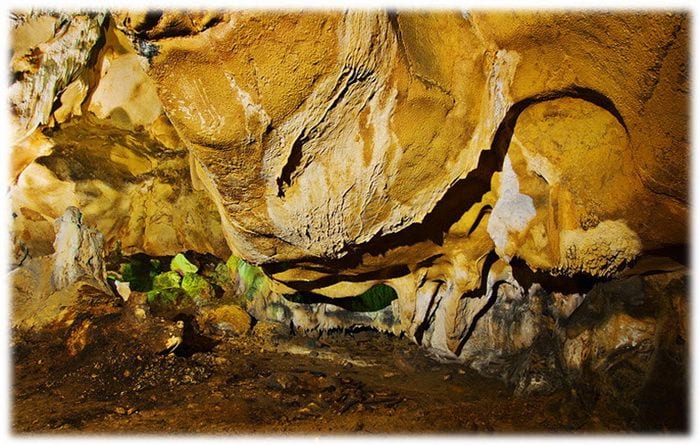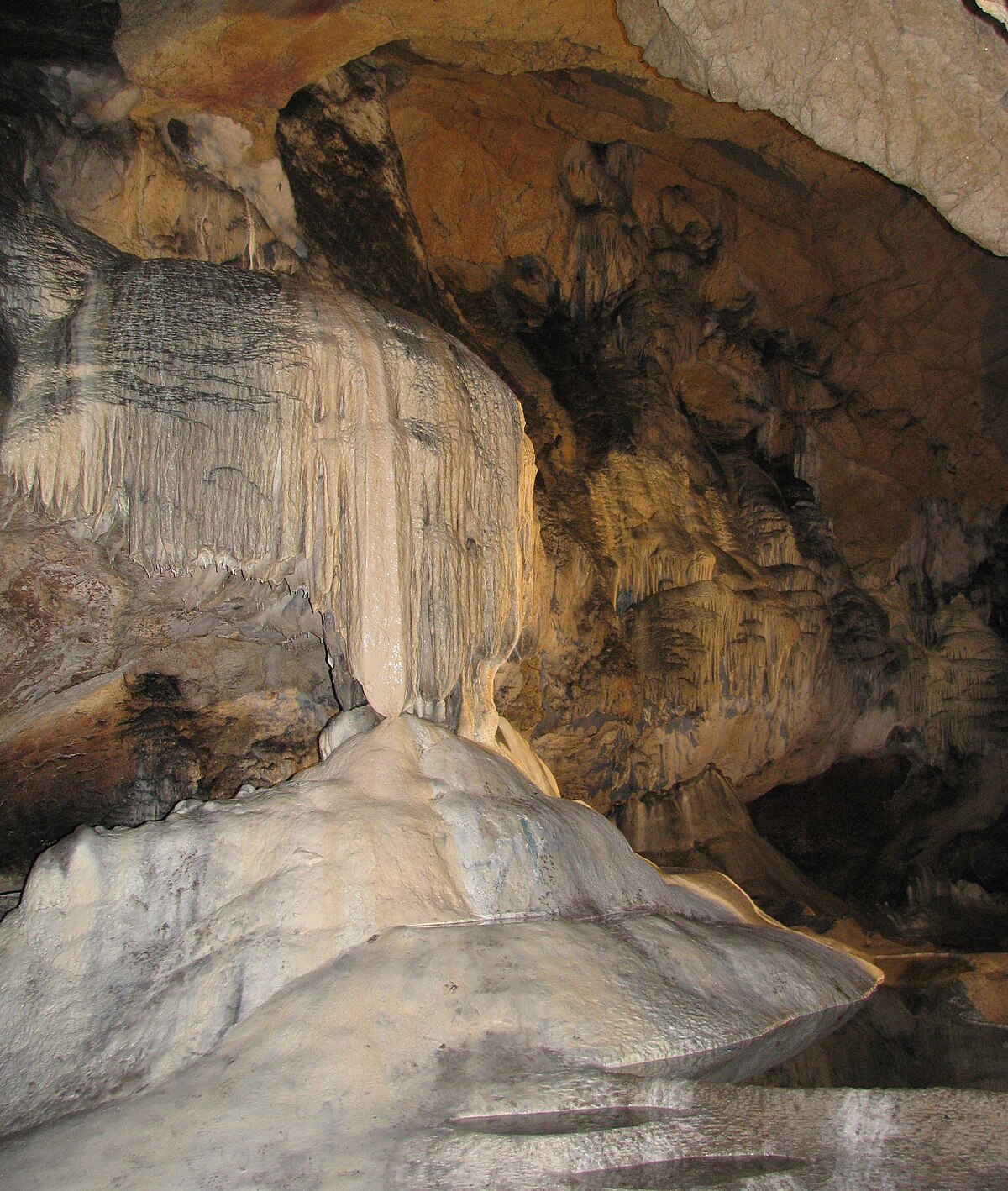Zlotska Pecina
Zlotske Caves - Lazareva Pecina - Лазарева пећина - Verknjica Pecina - Lazareva Cave - Verknjica Cave
Find Lazars Cave Lazareva Pecina Known Zlotska stock images in HD and millions of other royalty-free stock photos, illustrations and vectors in the Shutterstock collection. Thousands of new, high-quality pictures added every day. Biciklom od Zajecara do sela Zlot a potom i na Vidikovac br2.
Useful Information
| Location: | In eastern Serbia close to the town of Zlot. 22km from Bors and 240km from Belgrade. |
| Open: | APR to OCT daily 10-16. [2020] |
| Fee: | Adults RSD 200. Groups (20+): Students RSD 150. |
| Classification: | Karst cave |
| Light: | electric |
| Dimension: | Lazareva Cave: L=1,592m, T=9-12°C, H=100%, A=291m asl. Verknjica Cave: L=1,530m, T=3-9°C, H=100%, A=454m asl. |
| Guided tours: | Lazareva Cave: D=40min, L=694m. Verknjica Cave: D=3h, L=620m. |
| Photography: | |
| Accessibility: | |
| Bibliography: | Dr Radenko Lazaravic (1978): Zlotske pecina, 122pp 50 photos / surveys. () |
| Address: | Information: Tourist Office Bors, Tel: +381-30-24166, Fax: +381-30-25961. Motel 'Zlotske pecine', 19215 Zlot, Phone: +381-30-71042. |
| As far as we know this information was accurate when it was published (see years in brackets), but may have changed since then. Please check rates and details directly with the companies in question if you need more recent info. | |
History
Zlotska Pecina Srbija
| 1882 | first exploration of Lazar's Cave by Felix Hoffman. |
| 1889 | speleological research of Lazar's Cave published by Jovan Cvijić. |
| 1953 | Lazar's Cave opened to the public. |
| 1959 | explored by D Dvetkovic, T Sava and B Markovic. |
| 1960-62 | explored by D Petrovitsch. |
| 1965 | explored by D Gavrilovic. |
| 1976 | explored by Radenko Lazaravic and the Speleological Group from Valjeva. |
| 1976 | Vernjikica opened to the public. |
Description
In the case of Zlotske Caves the plural is earned by the fact that there are two different caves, connected by a footpath cut into the cliffs. They are called Lazareva Cave (Lazar's Cave, Lazarus Cave) and Vernjikica. Vernjikica cave is located on the left side of the Lazareva reka canyon, about 1.5km upstream from Lazareva. Lazarev kanjon (Lazarus Canyon) is a sight of its own, with steep limestone cliffs, it was formed by the cave river from the lower level of Vernjikica cave. The eastern foothills of the Kučaj mountain are full of caves, around the village of Zlot 222 caves are registered in the cave registry.

Lazareva Cave has two different levels, the upper level is toured. The lower level contains the underground Lazar River. The resurgence of the cave river is 7m lower and in frot of the cave entrance. In the cave archaeological remains from Copper Age through Late Bronce Age to Iron Age were excavated. Also the cave was frequented by animals during the Pleistocene, numerous bones were found. The bones of a lion and a bear are on display in the cave.
A legend about Lazar's Cave tells that hajduks hid in it during the rule of the Turks. When the Turks found out they blocked the entrance to the cave. But their blockade was easily destroyed by the cave river.
The Girl's Room was the place where the hajduks hid their daughters so that the Turks would not take them to the harem. The access to the chamber is a gradually narrowing passage, and at the end only one person at a time can pass through. The Turk which first protruded the head was greeted by a machete.
Motel Zlotska Pecina

Zlotska Pecina Slike
The cave is also famous for numerous bats. 24 of the 27 species of bats in Europe where found in Bat Hall. This hall is not part of the cave tour to protect the bats.
The tour through Vernjikica Cave shows eleven chambers: Prijmna, Kaskadna, Vilingrad, Koloseum, Mramorje, Gotska Katedrala, Dvorana Oruzja, Venerin Ham and Siparska Dvorana. Vilingrad is the largest chamber by surface, 2,950m², and got its name from the fantastic stalagmite shapes. The guides point out men, animals, flowers and a complete cave family from grandmother to a dog. Koloseum is the largest chamber in Serbia, 60m long, 55m wide, with a surface of 2,575m². The ceiling is up to 51m high and the volume is aid to be 90,000m³. It was named colosseum because of its circular shape and ruined columns. The biggest stalagmites in this chamber are Godzila (10m high), Toranj (9.5m high), Vecin Sesir (9.5m high), Minare (10.5m high), Kriva Crvena Kula (18m high, 8m in diameter), and Vavilonska Kula (22m high, 11m in diameter).


The Gotska Katedral (Gothic Cathedral) contains a lace of flowstone. Venerin Ham (Temple of Venus) has formations of pure white calcite. The centrepiece is Pecinska Verna (Cave Venus), a 3m high stalagmite, in the shape of a woman with raised hair. It resembles the famous Venus painting by Sandro Botticelli.
- See also
| Lazareva Pecina | |
|---|---|
| Location | Zlot, Bor municipality, Serbia |
The Lazareva Pećina, which translates Lazar's Cave, is the longest explored cave in Serbia.[1] Located in Bor municipality, near Zlot, the cave is also sometimes referred to as Zlotska Cave.[2] According to 2012's Recent Landform Evolution: The Carpatho-Balkan-Dinaric Region, the cave is 9,407 metres (5.845 mi) long.[1] The cave is situated near the entrance of the deep canyon carved into the mountains by the river Zlotska.[3]
The cave exhibits a long history of mining, with evidence of copper metalworks in the cave dating back 5,000 years.[2] The cave has been popular for tourism since at least the 19th century, when it was one of the three most popular caving destinations in Serbia along with Prekonoska and Petnicka.[4] Some of the paths are luminated and tourist services offered for modern visitors. It has been protected since 1949.[5]
See also[edit]
References[edit]
- ^ abLóczy, Dénes; Miloš Stankoviansky; Adam Kotarba (2 January 2012). Recent Landform Evolution: The Carpatho-Balkan-Dinaric Region. Springer Science & Business Media. p. 359. ISBN978-94-007-2448-8.
- ^ abKomatina, Miomir (31 March 2004). Medical Geology: Effects of Geological Environments on Human Health. Elsevier. p. 91. ISBN978-0-08-053609-5.
- ^Tasić, Nikola (1995). Eneolithic cultures of central and west Balkans. Draganić. p. 172.
- ^Tourism, International Union of Speleology. Commission for Cave Protection and Cave (1989). Cave Tourism: Proceedings of International Symposium at 170- Anniversary of Postojnska Jama, Postojna, Yugoslavia, Nov. 10-12, 1988. Postojnska jama, Tourist and Hotel Organization. pp. 64–65.
- ^Environmental protection of urban and suburban settlements: proceedings : XI International Eco-Conference, 26-29th September 2007. Ecological Movement of the City of Novi Sad. 2007. p. 72.
External links[edit]
Coordinates: 44°01′45″N21°57′46″E / 44.0293°N 21.9627°E